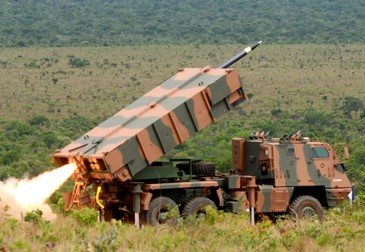The Problem
For three years, a S. American arms supplier had wrestled with how to power the missile fins on its anti-artillery, surface to surface missile. The problem was that the fin control actuator had to be powerful enough to deliver output torque of 50Nm while weighing less than 2.75kg. The unit could only be housed in the limited space between the outer skin of the missile and the rocket motor. To deliver that kind of power from a unit this small would be exceptional. There was also a side issue that it had to be able to operate at temperatures of up to 120°C.
OTMS actuators are built to run reliably for 25 to 30 years when they are exercised and tested regularly. The shelf life of the missile is 10 years which fits comfortably into the right time frame. However, missile fin actuators by their nature cannot be tested once installed so must be reliable and durable enough to work perfectly when called into action.
This creates another challenge. Conventional lubricants separate over time making their use impractical in this application because they will be denatured by the time the missile reaches the end of its shelf life.


The Customer Requirement
The ability to create the necessary power was not a problem for OTMS. We had to find a way of delivering it from a highly restricted space and from a very lightweight unit. We had achieved this before in similar situations but every project possesses its own unique problems. Our actuators have an impressive record of reliability and maintenance free application so we were confident we could deliver if we could solve the lubrication issue.
The Solution
Following our proven 8 step design process, we were able to apply our finest engineering brains to come up with a number of possible solutions to the problem. The pros and cons of all these were assessed according to merit and their ability to satisfy success criteria. In order to solve the space issue, we chose to turn the actuator through 90 degrees to operate at right angles to the missile body rather than in line with the motor as is the conventional set up.
We used substantial industry knowledge to source a lubricant that could successfully impregnate the gearing mechanism and stay active without separation for the necessary shelf life of the missile. From a weight, size, power and reliability perspective the desired levels of success criteria had been met.


The Outcome
The installation has now been fully flight tested and is in pre-production qualification.
